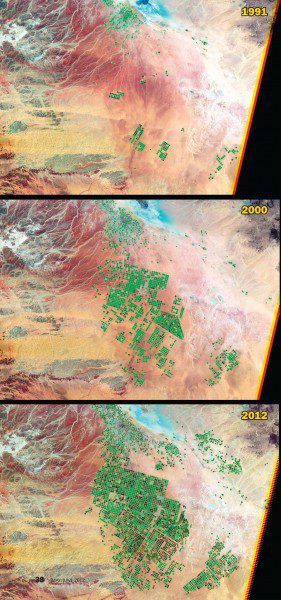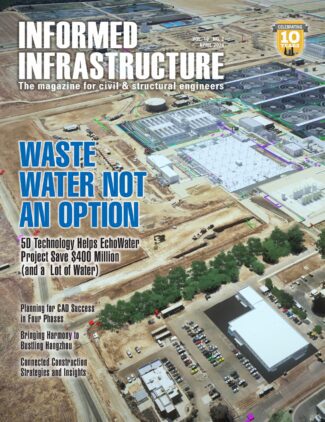In this series of Landsat images, sensors detected light reflecting off Earth in the short wave-infrared, near-infrared and green portions of the electromagnetic spectrum. With this combination of wavelengths, new vegetation appears bright green while dry vegetation or fallow fields appear rust colored. Dry, barren surfaces are pink and yellow.
Over the past three decades, Saudi Arabia has been drilling for a resource more precious than oil. Engineers and farmers have tapped hidden reserves of water to grow grains, fruits and vegetables in the desert.
The series of false-color images at left show the evolution of agricultural operations in the Wadi As-Sirhan Basin, as viewed by satellites in 1991, 2000 and 2012. The images were captured by similar sensors”the Thematic Mapper and Enhanced Thematic Mapper Plus”on three different Landsat satellites (4, 5 and 7). For scale, the agricultural fields in the images are about 1 kilometer (0.62 miles) across and use center-pivot irrigation.
The thirsty plants that rise out of the Arabian desertare quenched by water that dates back to the last Ice Age. In a more temperate past about 20,000 years ago, this fossil water filled aquifers that now are buried deep under the sand seas and limestone formations.


